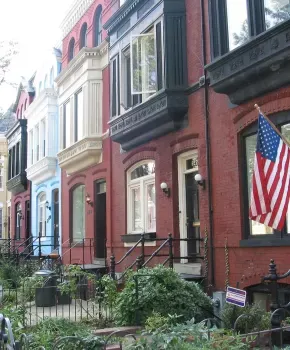Washington D.C., the U.S. capital, is known for its political significance but also holds deep historical roots, particularly in agriculture. Established in 1790, the city has transformed from farmland into a vibrant metropolis, where history and modernity meet. Delving into Washington D.C.’s agricultural past offers insights not only into the capital’s development but also into the nation’s cultural and economic heritage.
The Birth of Washington D.C. and the Role of Agriculture
The founding of Washington D.C. was a political compromise between the Northern and Southern states. Alexander Hamilton and the North sought federal assumption of Revolutionary War debts, while Thomas Jefferson and the South desired a capital advantageous to agricultural interests and slavery. This agreement determined D.C.’s location along the Potomac and Anacostia Rivers, chosen precisely by President George Washington.
Initially, the region was deeply rooted in agriculture, characterized by sprawling fields and large plantations. Agriculture was crucial for supplying food and resources to the local population. However, with the growth of government and other industries, agriculture’s prominence diminished over time. Yet, remnants of this agricultural past persist and are discoverable across the city.
Key Locations to Explore Agricultural History
1. Historic Gardens and Urban Farms
One of the best ways to delve into Washington D.C.’s agricultural history is by visiting historic gardens and urban farms. These sites offer not just a glimpse into the past but also showcase the evolution of agriculture within a modern urban setting.

- U.S. Botanic Garden: This garden is a treasure trove of information on plant species and farming techniques. Visitors can explore the history of agriculture through its plant collections and educational displays.
- National Arboretum: Spanning a large area, the National Arboretum conserves diverse native and imported plants. Visitors can explore themed gardens and learn about the role of plants in American history and culture.
- Urban Farms: Numerous urban farms have sprung up in Washington D.C., offering local residents access to fresh produce and education on sustainable agriculture. These farms often host tours and workshops, enhancing visitor understanding of food production and agriculture’s community significance.
2. History Museums and Historic Sites
History museums and historic sites in Washington D.C. also provide valuable insights into the area’s agricultural history.
- National Museum of American History: This museum showcases artifacts related to agricultural history, ranging from ancient farming tools to regional agricultural products. Visitors can learn about the lives of farmers and agriculture’s role in the nation’s development.
- President Lincoln’s Cottage: This cottage served as a retreat for President Abraham Lincoln during the Civil War. The grounds include a small farm where Lincoln often relaxed and explored agriculture. Visitors can tour the farm and discover Lincoln’s agricultural interests.
3. Farmers Markets and Festivals
Farmers markets and festivals are vibrant community events offering visitors a firsthand experience of Washington D.C.’s agricultural culture.
- Eastern Market: Eastern Market is one of the oldest farmers markets in Washington D.C. Here, visitors can buy fresh produce from local farms and enjoy regional specialties.
- Agricultural Festivals: Numerous agricultural festivals take place annually in Washington D.C., drawing locals and tourists alike. These festivals often include agricultural demonstrations, cooking competitions, and sales of farm products.
4. Universities and Agricultural Research Institutions
Washington D.C. is also home to many leading universities and agricultural research institutions.
- University of the District of Columbia (UDC): UDC has a strong agricultural program, focusing on research and education in urban and sustainable agriculture. Visitors can tour the campus and learn about ongoing research projects.
- United States Department of Agriculture (USDA): The USDA headquarters in Washington D.C. serves as a key resource for national agricultural information. Visitors can explore exhibits and learn about USDA programs and policies.

The Importance of Preserving Agricultural History
Preserving Washington D.C.’s agricultural history is not merely about remembering the past but also about shaping the future. By understanding past agricultural successes and challenges, we can gain valuable insights for developing a more sustainable and effective agricultural system going forward.
Furthermore, preserving agricultural history enhances our understanding of the connection between humanity and nature, and between urban and rural environments. Agriculture is more than just an economic sector; it’s a vital component of each nation’s culture and identity.
Conclusion
Washington D.C. is more than just a political hub; it’s a rich tapestry of history and culture. Exploring its agricultural history offers a fascinating journey, deepening our understanding of the city’s formation and evolution, as well as agriculture’s vital role in human life. Take the time to visit the locations highlighted in this article and uncover the captivating stories of Washington D.C.’s agricultural past!